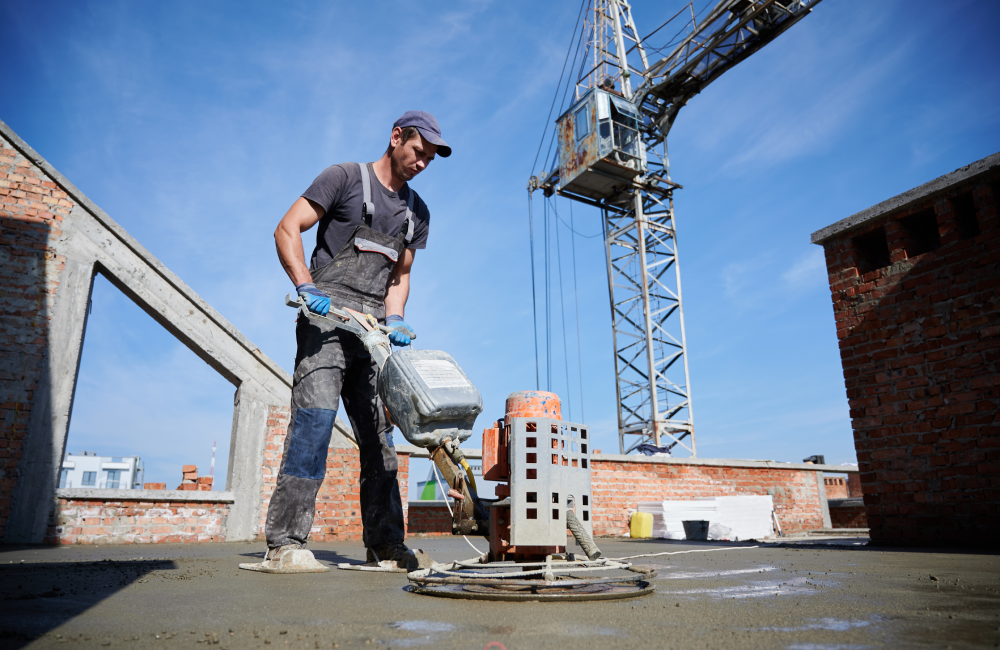Commercial
Commercial Applications
Looking for a fast and cost-effective solution for correcting concrete settlement and instability issues? Look no further than polyurethane foam. PLY’s innovative foam injection method is a cleaner, faster, and less disruptive alternative to traditional correction methods. Polyurethane foams are versatile making them ideal for a wide range of commercial applications. These applications include concrete slab lifting of all sizes, building foundation repair, repairing seawall & bulkheads voids, stabilizing sandy or wet soil below critical equipment.








From concrete slab lifting to void filling, deep foam injection and soil stabilization, PLYs foams are specifically designed to tackle some of the most challenging and costly issues in commercial infrastructure.
The 4 Key PLY Processes




The Advantages of Polyurethane Foam
Polyurethane foams are a superior alternative to for correcting settlement and instability issues under or behind concrete structures. Our solutions offer several advantages that reduce overall costs, improve the efficiency of the repair process and improve overall structural integrity.
- A Clean Process with Minimal Waste – Polyurethane foam injection is the cleanest lifting and stabilization process available. The injection equipment is mechanically connected to the structure, minimizing excess material usage. The extruded material is easy to clean up given it cures quickly.
- Minimal Disruption to Your Business – Our method is less disruptive to your business, as it is the quietest and fastest process for stabilizing concrete structures. Drilling the injection holes are quick and silent, with virtually no noise associated with the injection process. Our equipment is self-contained in a box truck, and it can be parked up to 100 yards away from any injection point.
- Immediate Use – Our foams have quick cure times, allowing for immediate usage, even for heavy loads such as trucks and large industrial equipment.
- Precision = Fast – Given our ability to precisely determine the injection points, our crews can lift concrete structures up to 12 times faster over traditional methods.
- The Foam Advantage – Polyurethane foams are a powerful solution for moving structures because they are a two-component liquid mixture that, when mixed and injected under pressure, rapidly expands and hardens into a high-density solid. This expansion creates a lifting force that can effectively raise and stabilize settled structures of immense weight & scale.
- Lightweight – Polyurethane foams are lightweight, reducing the overburden on underlying soils and minimizing the chances of resettlement. They are also the perfect option for overburden weight reduction projects.
- Waterproofing – High-density polyurethane foams are waterproof, allowing for a thorough undersealing of treated concrete structures.
- Environmentally Safe – Cured foam is fully inert & does not leach into groundwater. Polyurethane foam consists of fully reacted polymers and are considered non-hazardous per OSHA 29 CFR1910.1200
The Only Option for Many Commercial Structural Repairs
There are many times when polyurethane grouting is the only process that will address an issue. Here are some of the situations when polyurethane foams are considered the standard:
- Large Concrete Slabs
- Polyurethane foams are the best solution for large concrete slabs that are typically bigger than 100 square feet. Foam can travel under the entire slab from just one or two injection holes, creating an more powerful lifting force over mudjacking, minimizing the chance of cracking/damaging the slab.
- Polyurethane foam reacts differently depending on its density, which affects its speed and lifting capability. Lower density foams react faster and are suitable for concentrated lifting since they begin expanding within seconds of injection. On the other hand, higher density foams react slower and can travel as a liquid for up to 45 seconds before expanding and hardening, making them ideal for lifting extremely large areas.
- Heavy Concrete Slabs – Polyurethane foams can lift extremely heavy slabs with ease, thanks to its high expansion force and ability to spread under large areas of slabs and structures before expanding. These include roadway slabs, bridge approaches, rail crossings, and slabs with heavy loads, such as machinery bases and floors with backup battery power packs.
- When Cleanliness is Important – Polyurethane foams are ideal for areas where cleanliness is vital because of the small and infrequent holes, drilling of the injection holes. There is a mechanical connection between the injection equipment and the slab. The automatic, mechanical valves on the injection equipment prevent material leakage when not injecting.
- Load Sensitive Areas – Polyurethane foams are lightweight, typically weighing between 2 to 6 pounds per cubic foot, making them an excellent solution for load-sensitive areas. The weight savings with polyurethane foams are significant given that sand-based injections and mudjacking typically weigh more than 100 pounds per cubic foot.
- Remote or Population Dense Locations – High-density polyurethane foams are stored and transported as a liquid, making it an ideal solution for logistically challenged locations. Our foams expand onsite as part of the injection process, and a single non-CDL box truck can easily transport more than 100 cubic yards of expanded material. Raw polyurethane material is transported in standard IBC totes, making it easily transportable, storable, and handled on job sites.
Ready For Your Next Project?
Our team of Commercial Foam Specialist are available to provide support, review project details and recommend specific solutions. Let us know what your specific situation entails.
Commercial Foam Options
Recycled Line
Hydrofoam Line
Specialty Foams
Recent Articles
Why Should You Invest in Professional Concrete Raising Services?
Why is Void Filling Crucial for Maintaining Structural Integrity?
Why is Soil Stabilization Essential for Sustainable and Durable Infrastructure?

